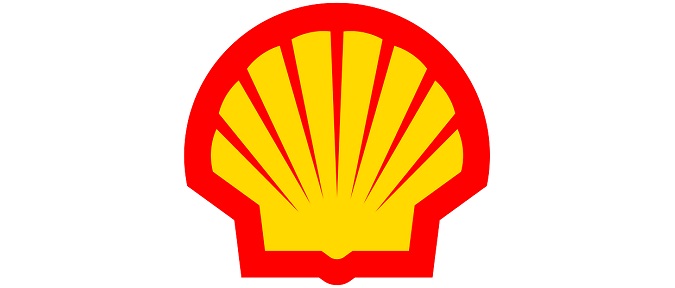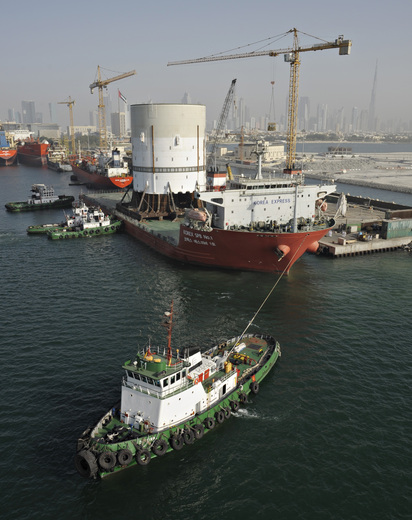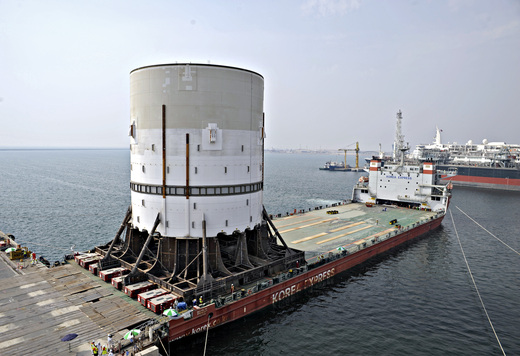Resources
Giant turret module for world’s largest floating facility sets sail for South Korea

The largest piece of the turret for Shell’s Prelude Floating Liquefied Natural Gas (FLNG) facility has set sail from Dubai for the Samsung Heavy Industries shipyard in Geoje, South Korea, where the facility is under construction.
The turret is part of a mooring system designed to ensure Prelude FLNG can operate safely in the most extreme weather conditions. At almost 100 metres high, it is the largest in the world. The turret will run through the front of the facility and connect to giant chains that will keep it moored securely over the Prelude gas field. The turret mooring system will allow the facility to turn slowly in the wind and with currents – ensuring it can remain safely at its location through the most powerful cyclones.
“Prelude FLNG combines our many years of experience in shipping and in managing complex LNG and offshore projects. It’s great to see our innovative designs and technologies become a reality as we reach significant project milestones like this,” Matthias Bichsel, Projects & Technology Director at Shell said.
“Designed in Monaco, built in Dubai, shipped to South Korea and for use off Australia, the turret is an example of the truly global nature of this project.”
 Shell was the first company to commit to an FLNG project, and it expects Prelude FLNG to be the first of many such Shell facilities.
Shell was the first company to commit to an FLNG project, and it expects Prelude FLNG to be the first of many such Shell facilities.
Once complete, Prelude FLNG will operate in a remote basin around 200 kilometres off Australia’s north-west coast, for around 25 years. It will produce about 3.6 million tonnes of LNG a year to help meet rising global demand for cleaner energy.
After the first 25-year assignment, Prelude FLNG could be refurbished and moved to a different field for another quarter century.
FLNG will allow Shell to produce natural gas at sea, cool it onboard into LNG, and pump it directly into ships that will transport it to customers around the world. It can mean faster, cheaper and more flexible development of offshore gas fields that would otherwise be too costly to develop.
Prelude FLNG Turret Facts and Figures
- This part of the turret weighs 4,300 tonnes.
- The turret’s swivel design enables the facility to ‘weather vane’ by allowing the hull of the facility to rotate according to the prevailing wind, waves or current, while the turret moorings remain fixed to the sea floor.
- The turret structure has been designed to enable the FLNG facility resist the most extreme weather conditions, including category five cyclones, and the facility will remain on location in all conditions.
- The mooring system includes four groups of four mooring lines, sixteen in total, that will secure the facility to anchor points about 250 metres below the surface of the sea.
- The mooring lines are a combination of chains and wire. These connect the turret mooring system to the 62.5 metre long and 5.5 metre diameter anchor piles secured to the seabed.
- The mooring chain links, about one metre in length and among the largest in the world, are being made in Spain.
- The chain connectors that will link the Prelude FLNG substructure to its mooring lines are designed to withstand the breaking load of the largest type of offshore chains and to operate for 25 years.
- The subsea connections that extract and control the flow of gas from the reservoir also connect via the turret. The turret was designed by SBM Offshore in Monaco and construction has been underway at Dubai DryDocks World since 2012.

Prelude FLNG Background
- Prelude FLNG is a natural gas project located approximately 475km north-north east of Broome in Western Australia.
- Shell is the operator of Prelude FLNG in joint venture with INPEX (17.5%), KOGAS (10%) and OPIC (5%) and working with long-term strategic partners Technip and Samsung Heavy Industries (the Technip Samsung Consortium).
- The project will be the first to use Shell’s revolutionary Floating Liquefied Natural Gas technology, which allows for natural gas to be extracted, processed, stored and transferred at sea.
- FLNG removes the need for pipelines to shore, dredging and onshore works and therefore significantly limits the disturbance to the surrounding environment and reduces development costs.
- Shell FLNG can be deployed in a range of field development scenarios, with high production rates and with a wide range of gas compositions.
- Shell was the first to make FLNG a reality. In May 2011, Shell announced final investment decision on Prelude FLNG.
- Once operating, the Prelude FLNG facility will produce 3.6 million tonnes per annum (mtpa) of LNG, 1.3 mtpa of condensate and 0.4 mtpa of LPG.
- The Prelude FLNG facility will be 488 metres long and 74 meters wide. It will weigh more than 600,000 tonnes with the cargo tanks full.
- The FLNG design has gone through extensive testing programs and simulations to ensure it has the ability to remain connected and moored to the sea floor throughout all weather conditions.
For more information about Prelude FLNG visit: www.shell.com/flng

















































